Majeda
Clarke
Within the folds of Majeda Clarke’s beautiful, hand-woven textiles, there are stories, memories, histories and traditions, both lived and learned, from people around the world. By highlighting the geometry of weave and playing with colour inspired by her own cultural journey from Bangladesh, Majeda brings a modern aesthetic to an ancient craft. Over the recent weeks and months, she has become both a teacher and a student once again; deepening her understanding of craft and reinvestigating her responsibilities as an educator at home.
Weaving global stories and traditions
Woven Textile Artist
Above
Majeda holds her
Caernarfon blanket
Photo: Chris Proctor
Tell us a bit about yourself
03 JUL 2020 My name is Majeda Clarke, which is also the name of my textile art practice. I am a weaver based at Cockpit Arts in London. I’ve had my studio for 4 years after graduating with a degree in Textile Design. I decided to retrain in textiles 20 years after my first degree in English and after a 10-year career in teaching. Three children later and in my 40s, I decided it was time to pursue a long-held dream of setting up my own studio.
My practice has three strands: interior products sold on my website and through Fortnum and Mason and selected galleries; bespoke art commissions mainly handwoven on my loom and public engagement work. Although each strand is distinct, they follow my values around people, place and environment.
My blankets give a modernist twist to centuries old double cloth techniques woven in a traditional Welsh mill. This technique has been used in that region by generations of families. My Jamdani scarves are hand woven on old bamboo pit looms in Dhaka. Again, this is an ancient technique favoured by the Mughals and now has UNESCO World Heritage status as a dying craft. It was called ‘Woven Air’ by the Romans as it was celebrated for being the finest cloth woven by man. I sit down with the weavers and make the first scarf with them to ensure consistency. Then I leave them to make 10 of each design. It is a proper cottage industry where, often, husband and wife sit together at a loom working at their own pace.
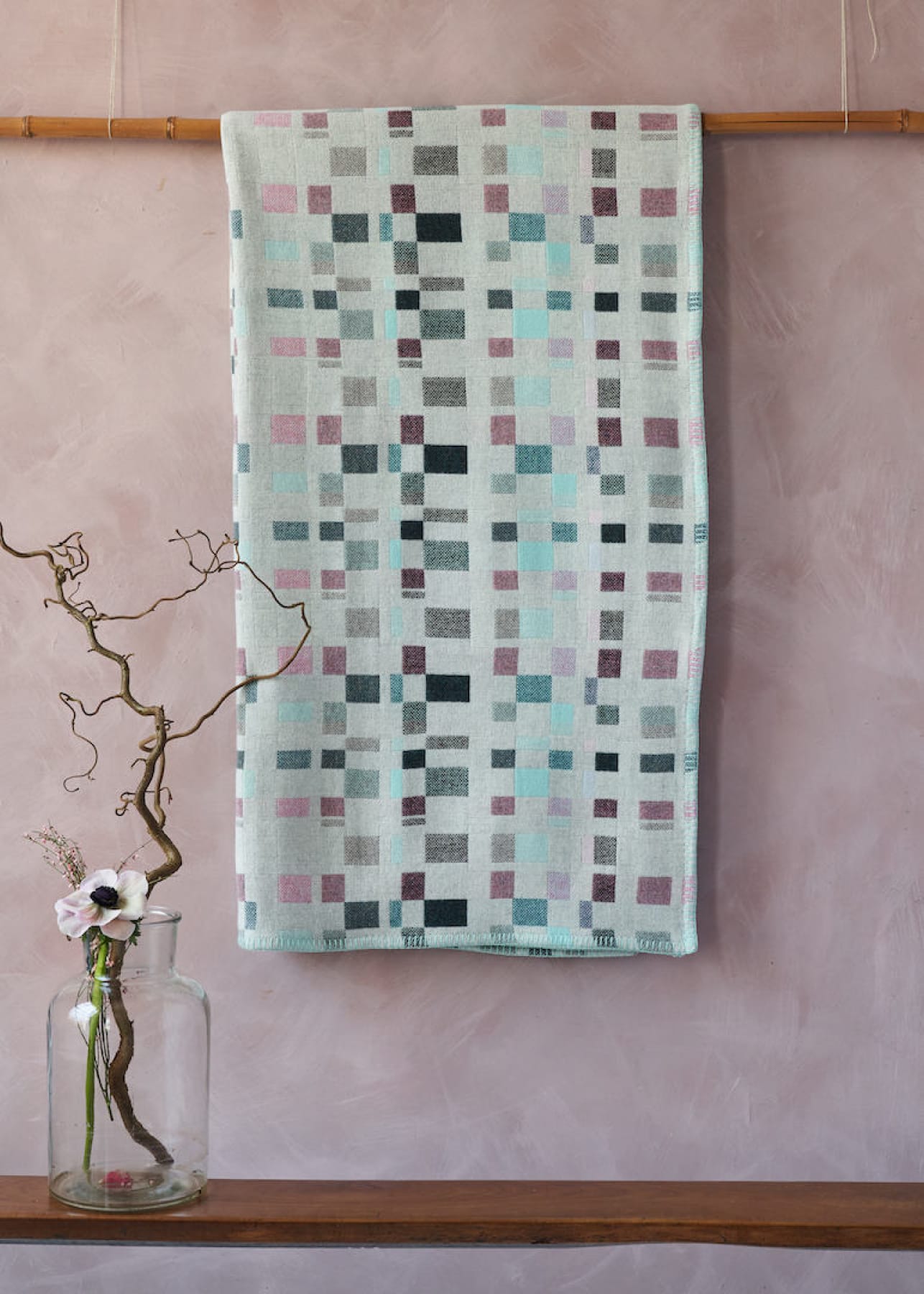
Above
Macaron, Majeda’s new collection in
collaboration with Fortnum and Mason
Photo: Yeshen Venema
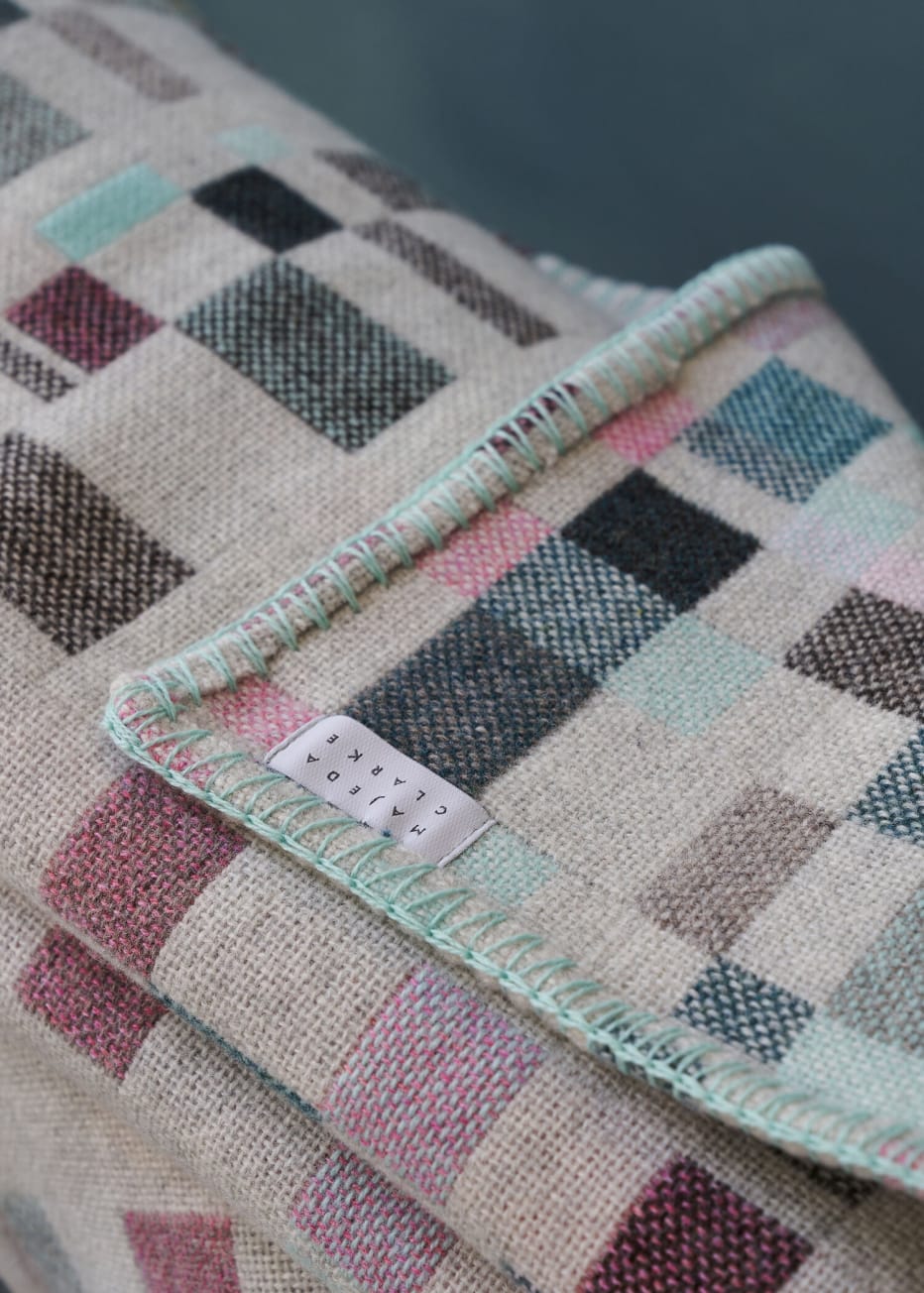
Above
Macaron blanket colours inspired
by
macaroons, mint pistachio and chocolate
Photo: Yeshen Venema
However, in order to continuously challenge my own creativity, I like to weave art work in my own studio for clients and organisations. My last piece was a series of hand woven silk panels for a refugee choir that depicted the narrative of their journey to Britain. They donated items that reminded them of home, which I wove into the work. Each object tells a story. The work that I choose has an integrity that reflects my own values as a Bengali British immigrant straddling two cultures and exploring multiple narratives.

Above
‘Woven Air’ hand dyed,
hand woven silk hanging
Photo: Yeshen Venema
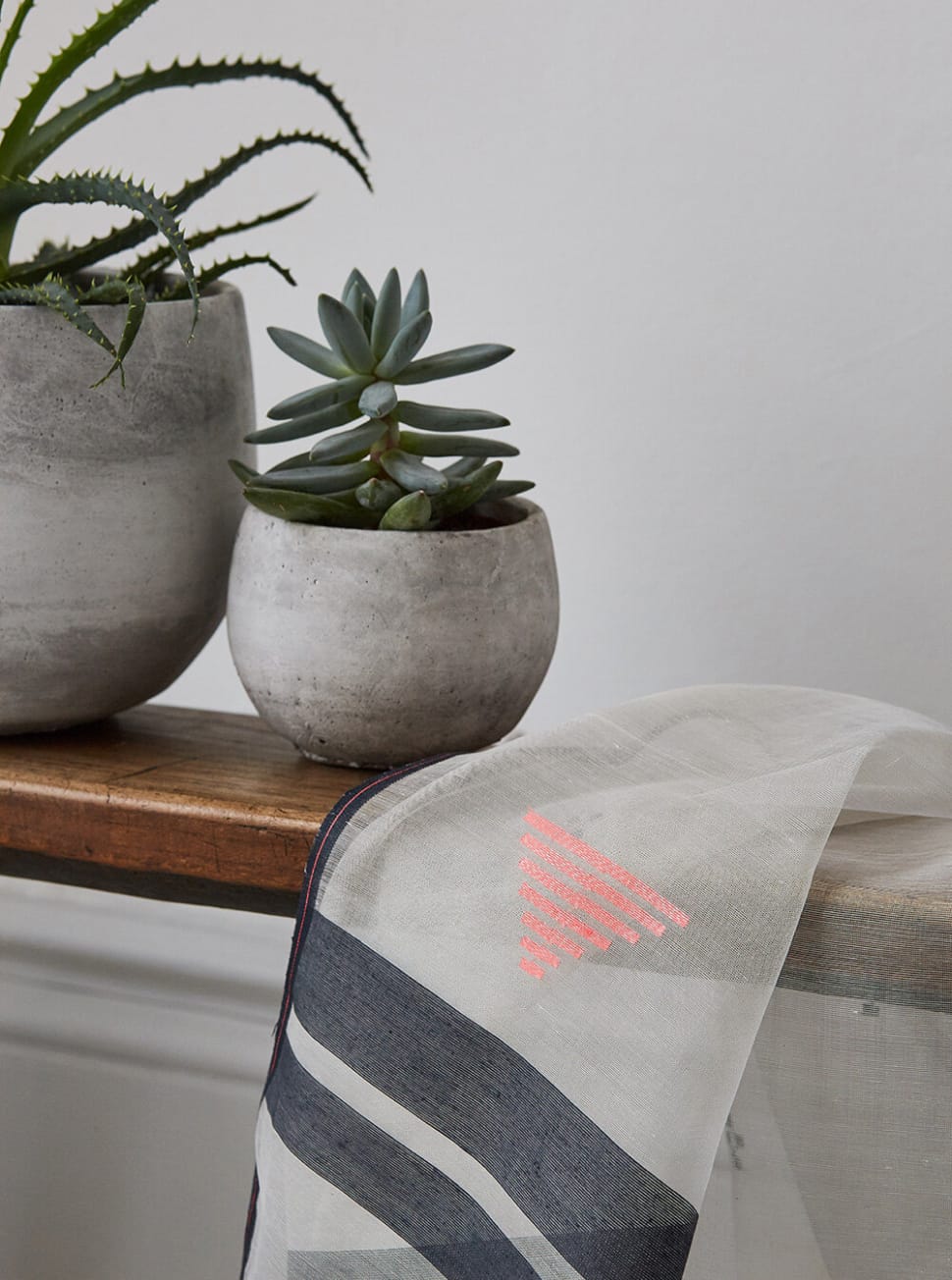
Above
Jamdani scarf detail
Photo: Yeshen Venema
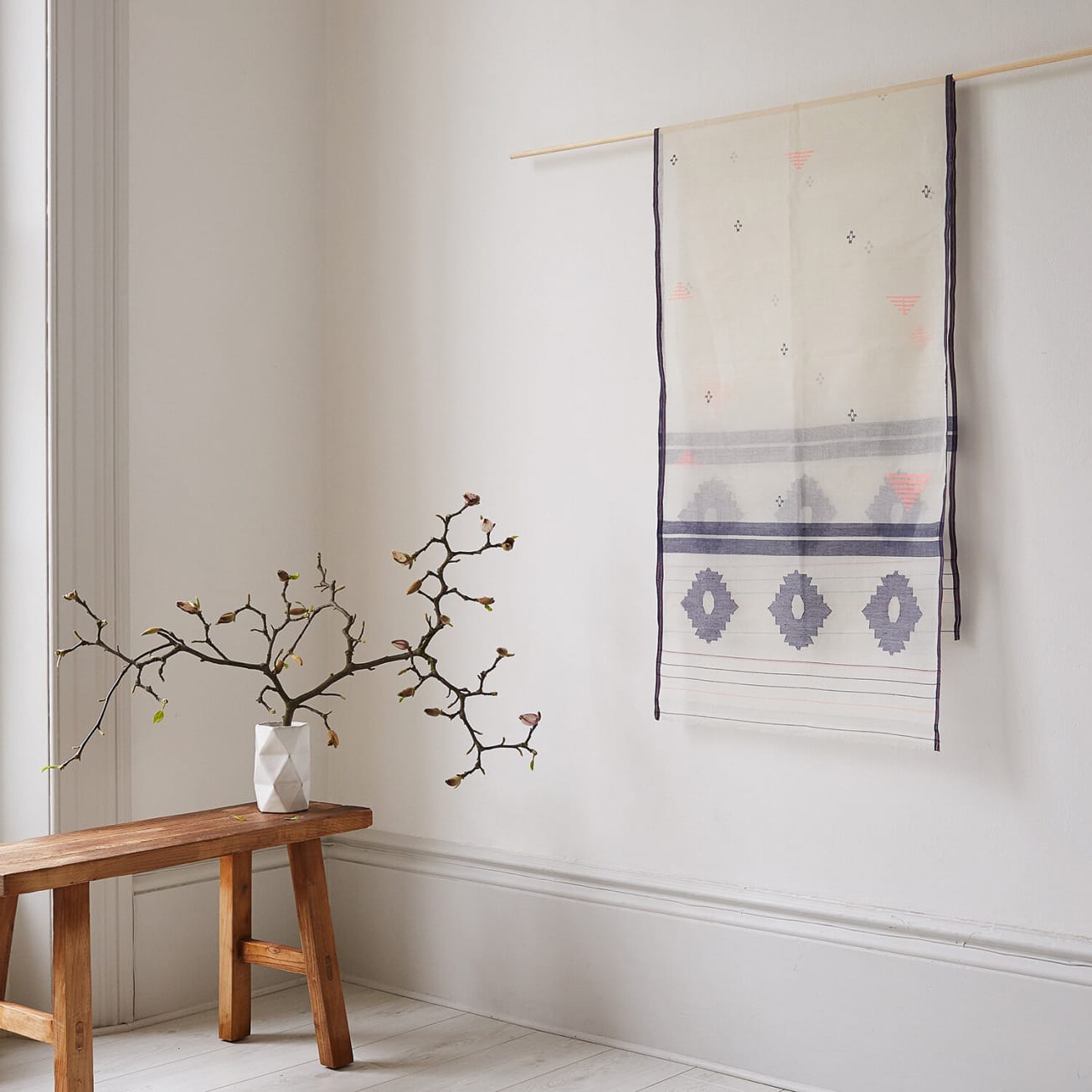
Above
Jamdani scarf
Photo: Yeshen Venema
How have the last few weeks or months shaped or impacted your Practice?
After the initial panic of my studio being shut down, I began to evaluate my current practice. It was such a distracting time that I found it hard to focus on actually making anything, in fact I struggled to even read a book, which is always my comfort. Couple that with trying to online homeschool three children and you can picture the chaos.
I took any opportunity offered for online training and workshops—The Design Trust did some wonderful free workshops on how to teach online and there were many more such programmes. It felt like I had entered a new world of learning. I have been incredibly grateful to all the art organisations that supported makers through this, from Design Nation’s regular support meetings to Cockpit Arts reduction of fees for its members.
I used the time to fine tune my online provision and social media presence. Society is having to rethink how we work and I need to take a step toward new possibilities. I just got my first online job delivering a workshop for a museum, something I would never have considered 6 months ago. So it seems we are all moving in the same direction, only this time a little more slowly as so many reconnect with making from baking, to veggie plots to sewing. Tactility, I think, is being rediscovered
Thankfully my online sales continued throughout lockdown, which gave me a little breathing space, some time for writing and reflection. Not only was I considering the role my practice could play in supporting a post-lockdown world but also a world newly awakened to the challenges of racism.
My practise is based on diverse voices spoken through making—my own multicultural identity frames the choices I make in my craft, yet in the wake of the Black Lives Matter movement, I realised I needed to widen my reach. Because I was a BAME Ambassador for the Crafts Council, because I took part in diversity in craft research and panel discussions, because I was visible as an Ethnic minority, I thought I was doing enough. It slowly dawned on me that I was both complicit and complacent.

Above
Majeda’s first school photo
I started asking the questions that I should have been asking all along in the broader spectrum of education. My children were taught in British schools, like me. And like me, they are still learning British history through a narrow Eurocentric lens. My son was studying the Second World War and did not know that 2.5 million Indians fought; my other son had not read a novel by a single black or Asian writer in 10 years of schooling. I had never thought to challenge those assumptions until now and consequently so many memories resurfaced of how my own racial identity was shaped.
It struck me that I was in a unique position of being an experienced educator, a senior teacher and a practising Asian artist. I have spent the last few weeks writing to schools, re-teaching my children a 360 view of history—their history and helping institutions, including creative institutions, ask the right questions. Some have welcomed my interaction, others have politely diverted me. I’m feeling galvanised.

Above
Majeda (center)
with her family
I had never thought to challenge those assumptions until now.”
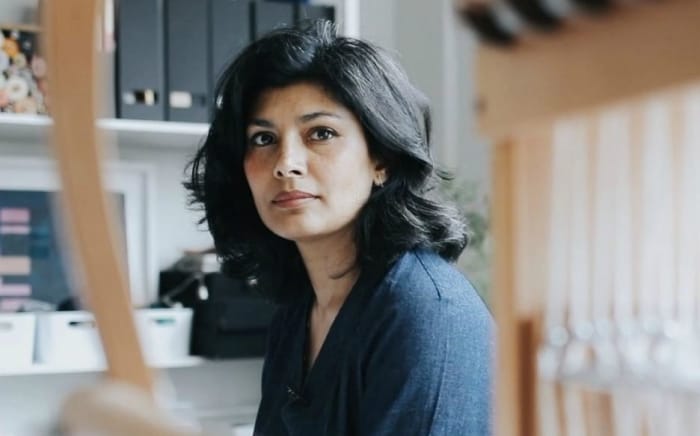

Above
Designs for the new Winter collection Majeda
and her assistant, Charlotte, were working on
when they had to down tools and stay at home
How are you coping at home?
My assistant Charlotte and I returned to the studio on a part-time basis three weeks ago to get back on my loom. My collection, abandoned in March, needed completing. It was wonderful to take up where I left off and feel the pull of the warp and the tug of the weft in my hands again.
However, I have begun new projects in lockdown and am attempting to engage my children in them; my vegetable patch needs tending; we have chickens (yes really); I’m writing again, so I have found a better work-life balance that I intend to keep. And friendships, how precious they have become—who knew WhatsApp and Zoom could save us?

Above
Albers Blanket pays homage
to both Josef and Anni Albers
Photo: Yeshen Venema
What has inspired you recently?
People—good friends, a more socially conscious society, the power of family.
Making at home—being creative with what’s around you from dyeing with avocados to finding shapes in nature.
Stopping to stare—in the first few weeks of lockdown I was getting up at 5am. Instead of trying to get back to sleep, I began to take in the dawn chorus outside. I would take my cup of tea, step outside and listen. Allowing myself time to savour those precious, still moments before my household rose and the day began.
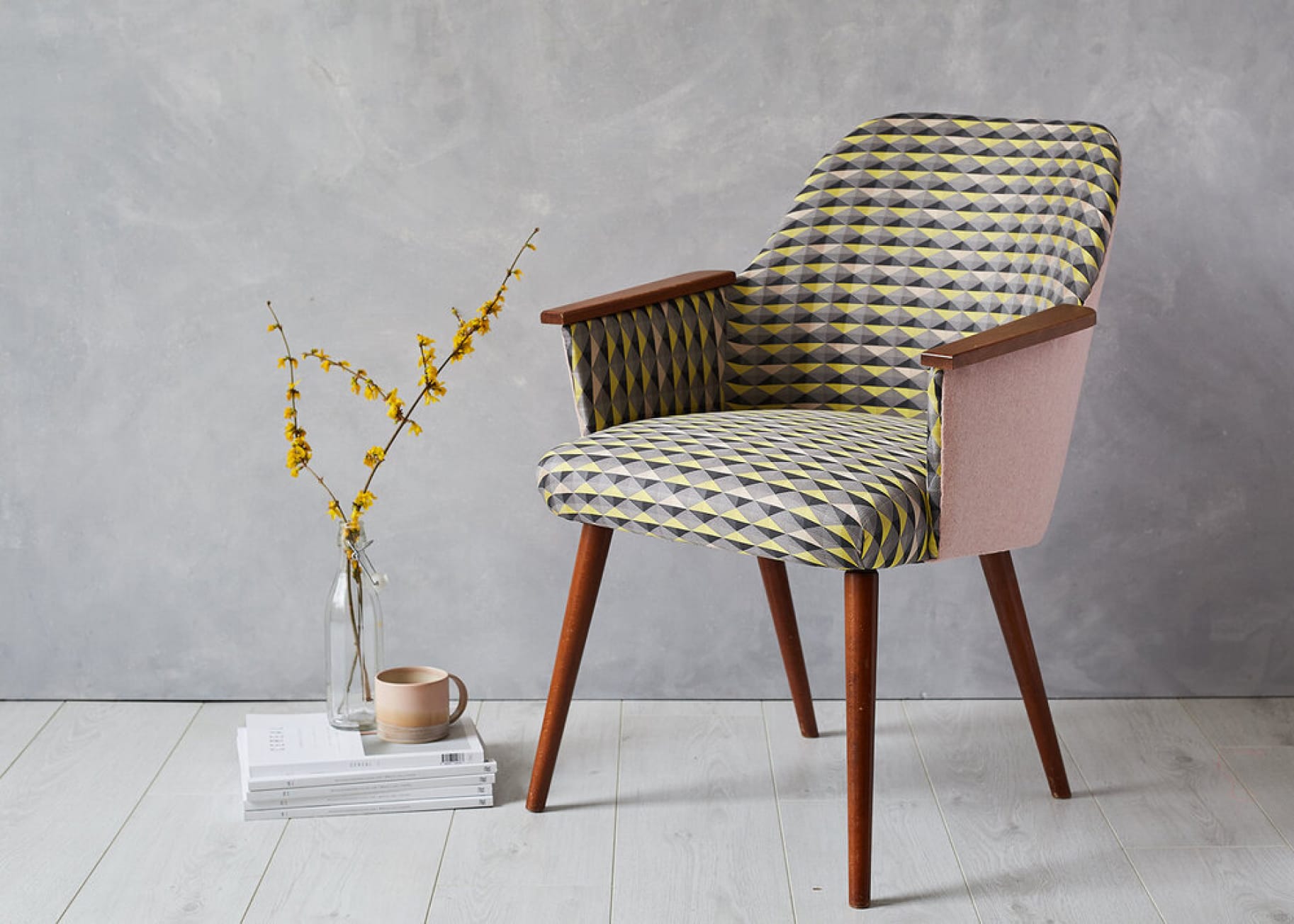
Above
Shaded Triangles Jacquard Chair
Photo: Yeshen Venema
What are you looking forward to?
Change. A new way of working, a slower pace, re-engaging with the discourse of diversity.
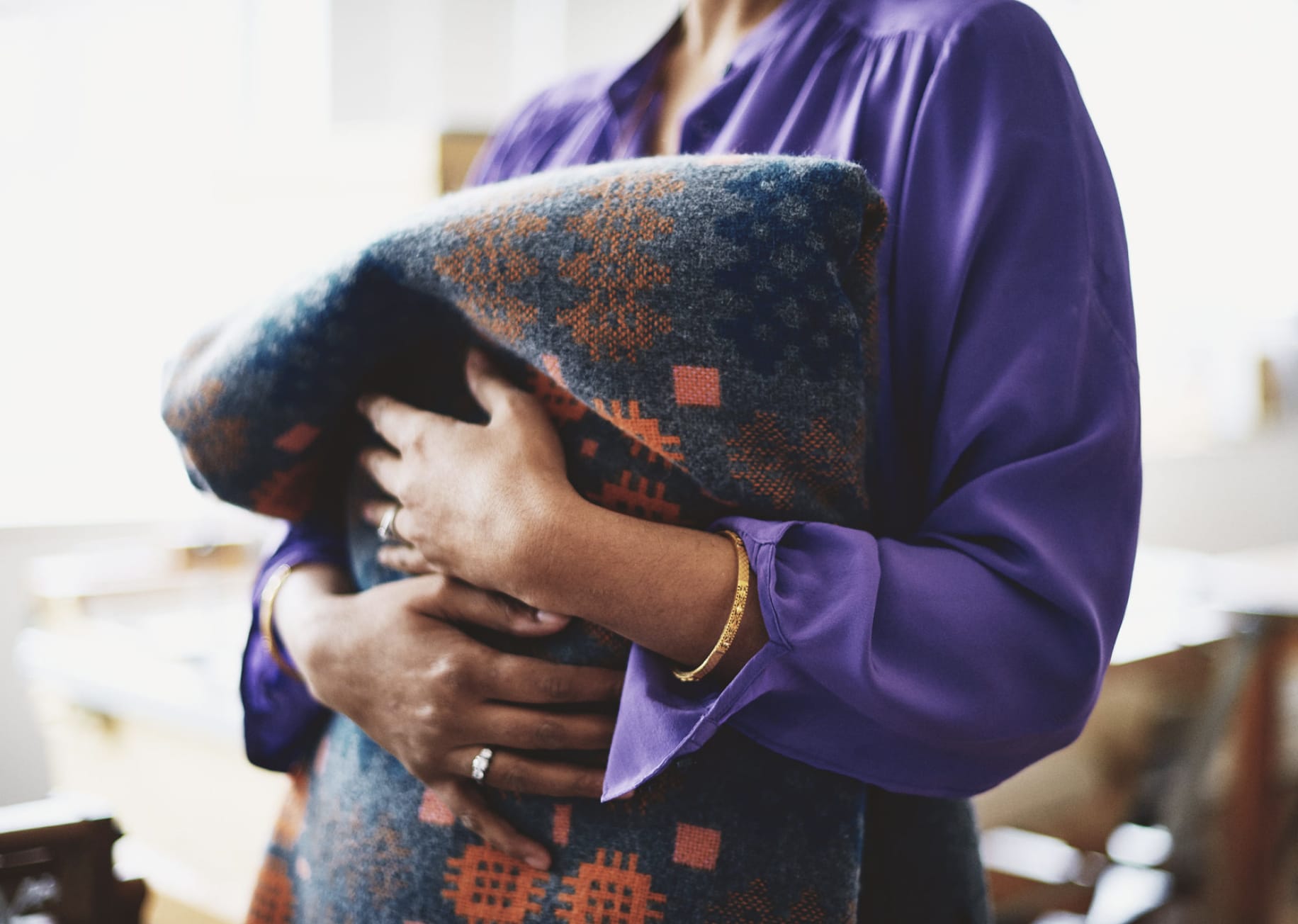
Above
Majeda holds her
Caernarfon blanket
Photo: Photo: Chris Proctor
How can people support you?
My website is www.majedaclarke.com where you can buy my woven products or sign up for my newsletter. Follow me on instagram @majeda_clarke.

Above
Portait in Majeda’s studio
Photo: Thom Atkinson